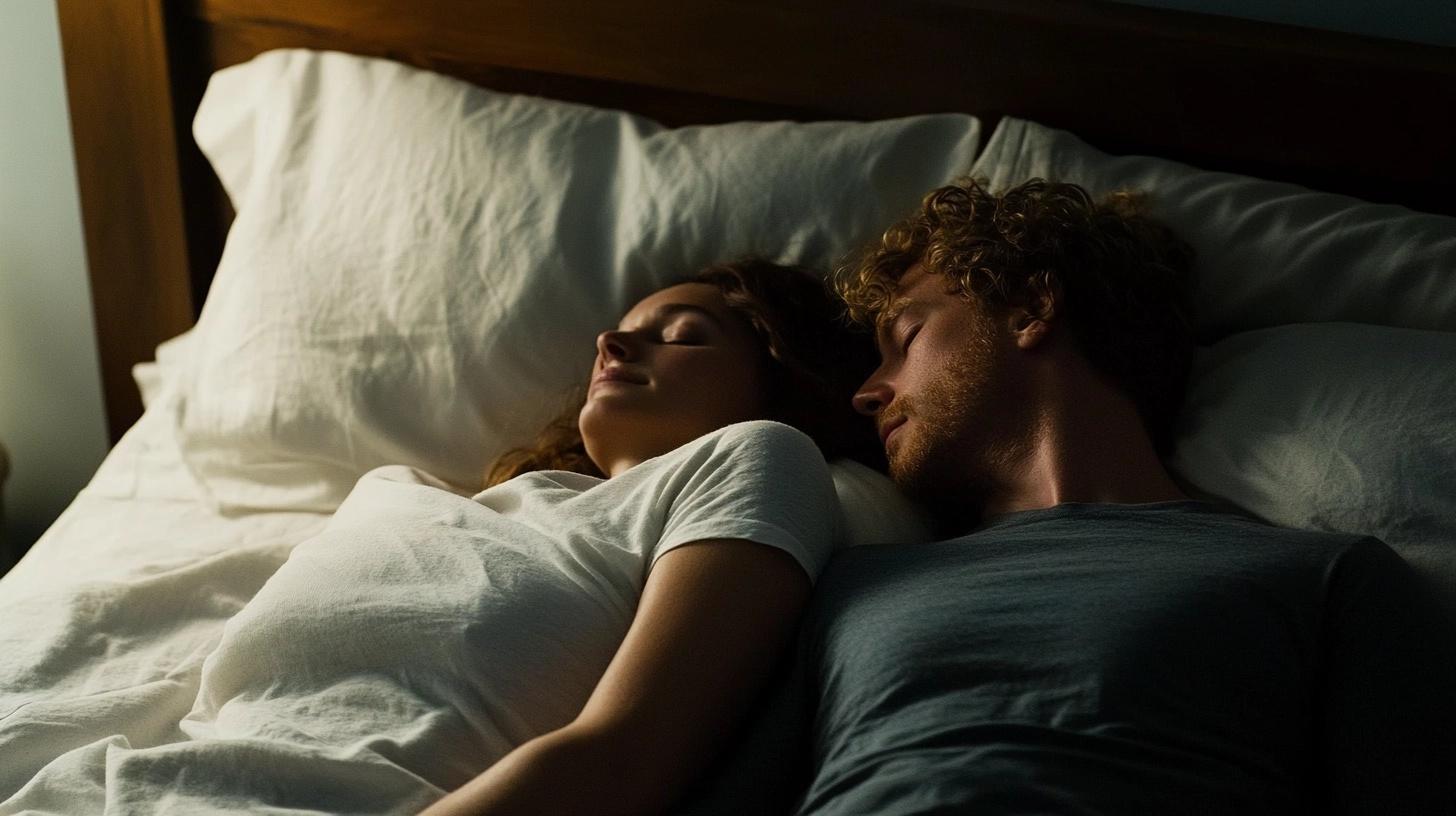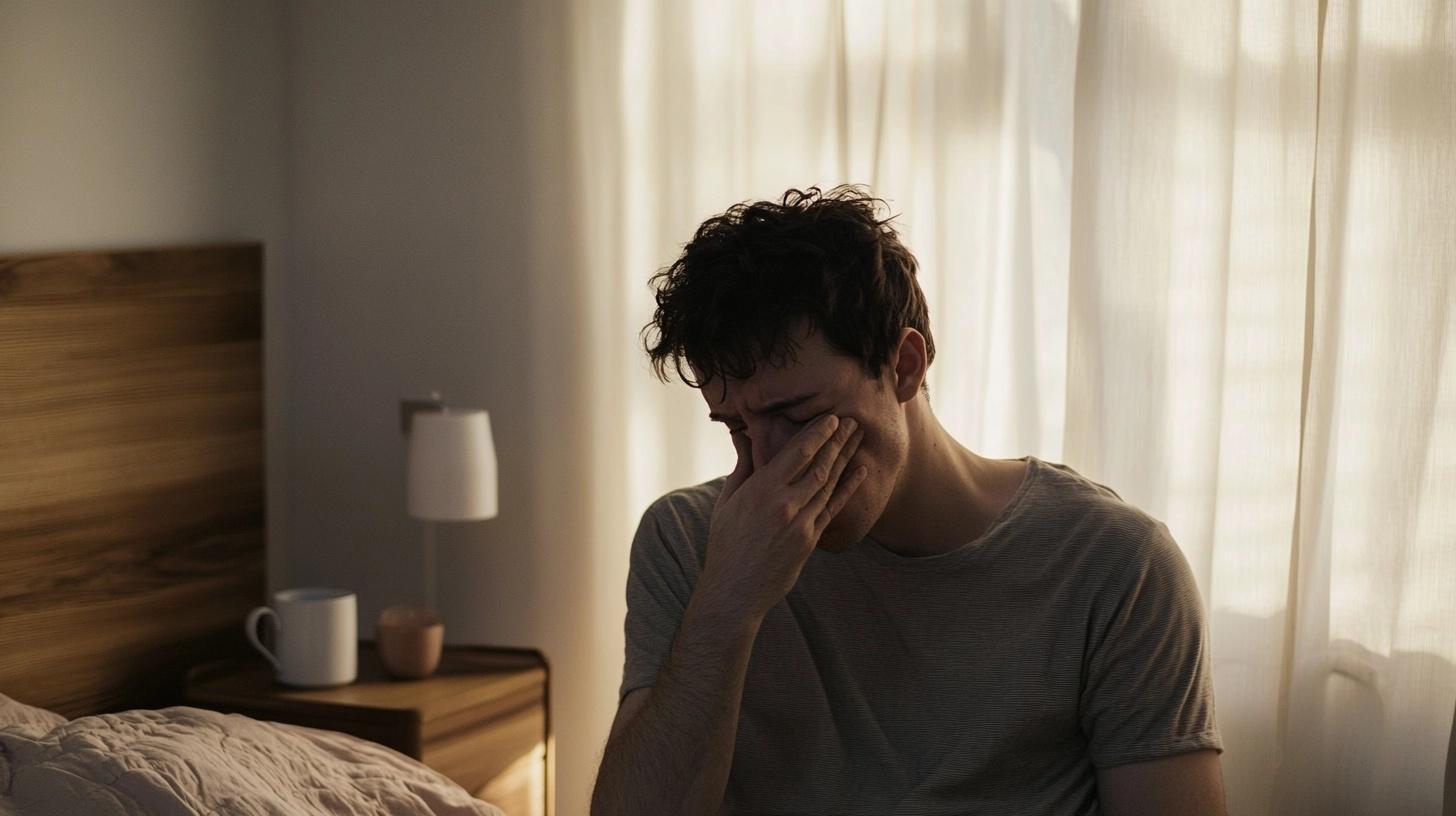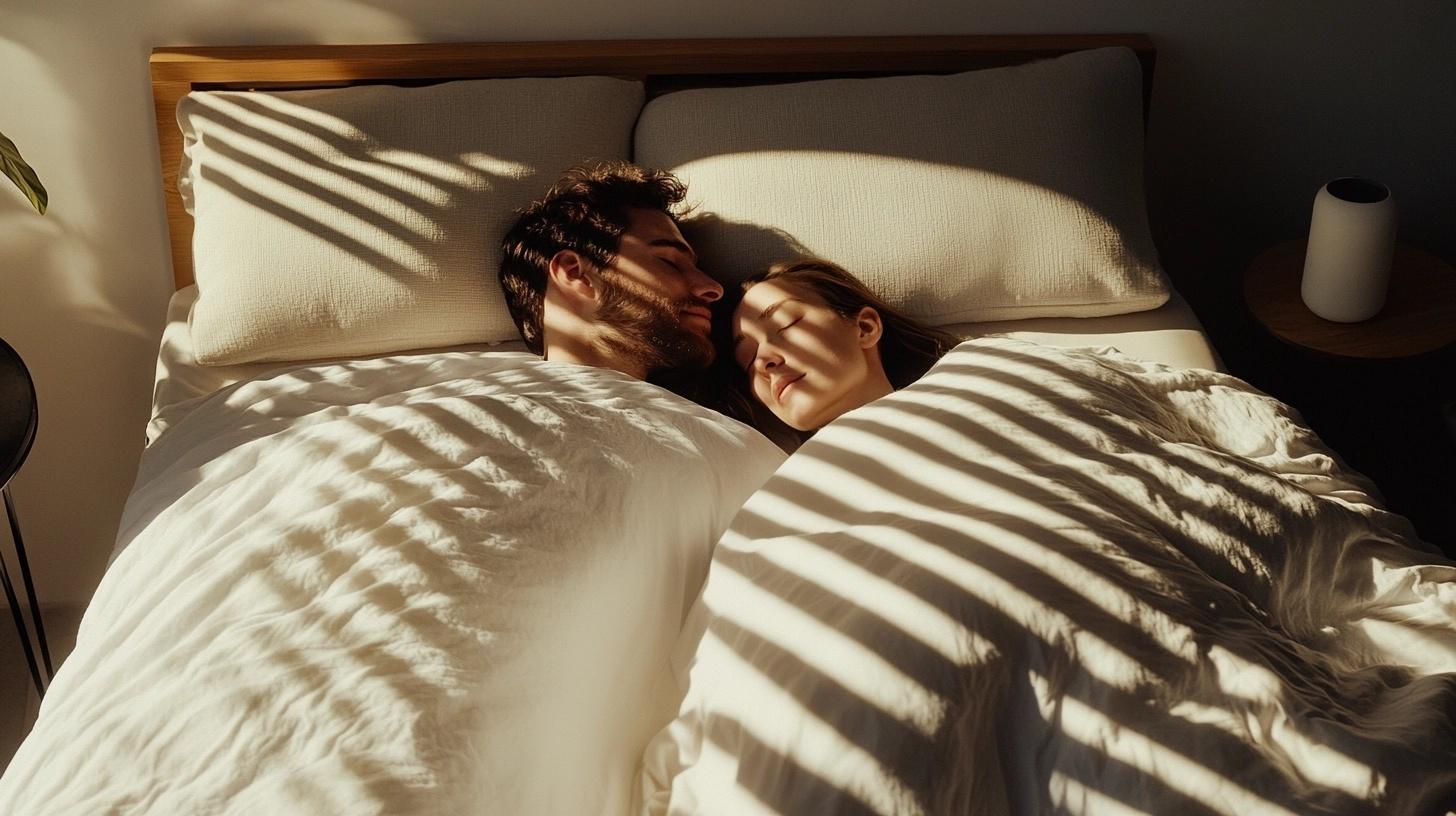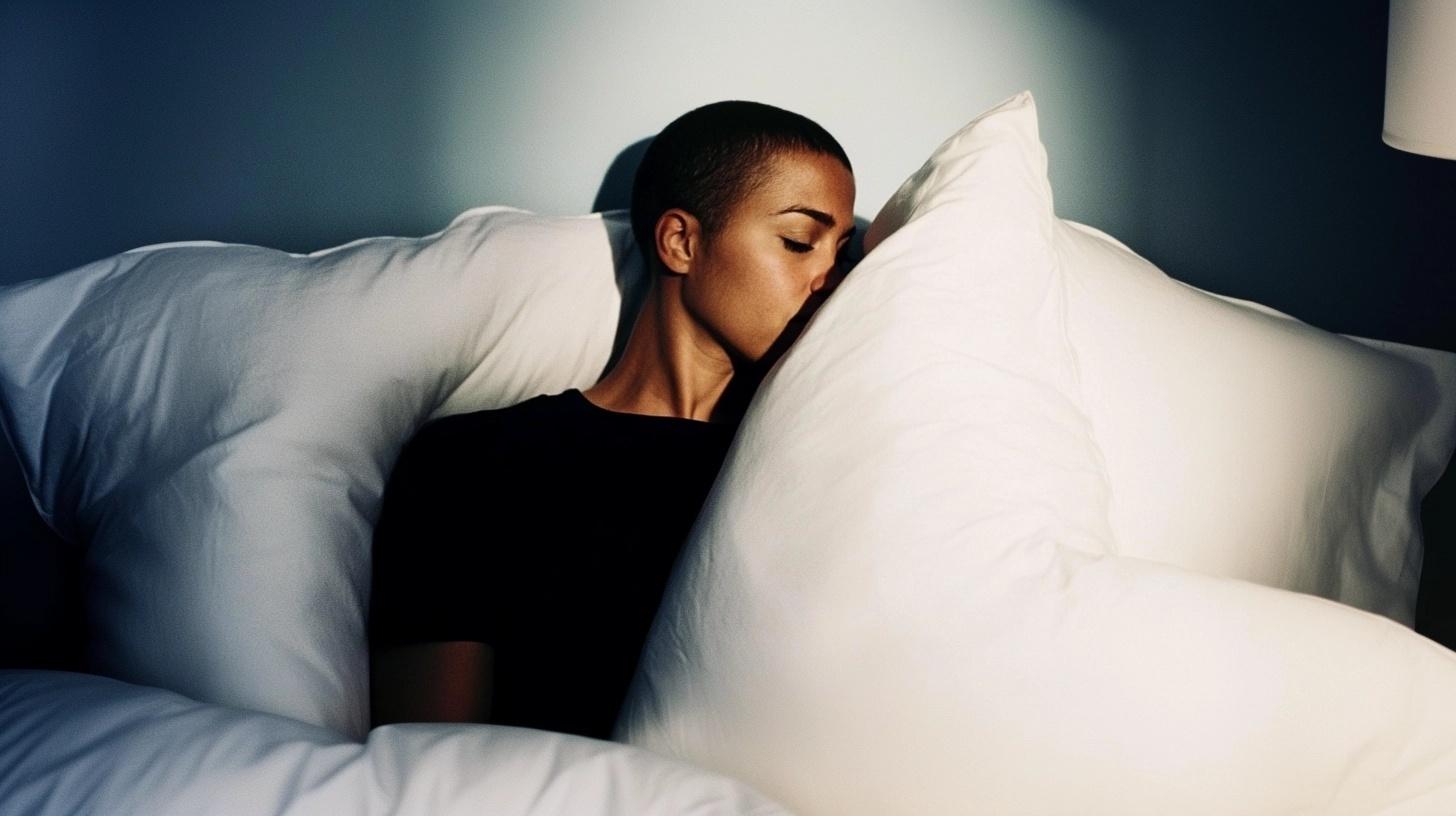Can sleep apnea cause diabetes?
Published

Sleep apnea is the most common sleep disorder associated with diabetes. A whopping 71% of people suffering from type 2 diabetes also have obstructive sleep apnea (OSA). In contrast, only 4-10% of non-diabetics experience a form of this sleep disorder.
We know that sleep apnea might lead to type 2 diabetes because it has been shown to increase insulin resistance. But why does sleep apnea seem to favor diabetics? And are diabetics more prone to develop sleep apnea? We’ve decided to shine a light on the connection between the two and explore ways to manage sleep apnea and diabetes.
In this article we’ll explore:
- How sleep apnea affects blood sugar
- Can diabetes (also) cause sleep apnea?
- How to manage sleep apnea and diabetes
- Check your sleep quality with the Sleep Cycle app
How sleep apnea affects blood sugar
Interruption in breathing leads to insulin resistance and changes the glucose metabolism. When breathing is paused, more carbon dioxide is in the bloodstream and the concentration of oxygen dips below normal levels. This is called hypoxemia which prevents the body from using insulin effectively, from carrying insulin to the cells and for cells to stop responding to insulin. This causes an increased level of sugar in the bloodstream. Insulin resistance, or cells becoming immune to insulin, is what you see in prediabetes and type 2 diabetes.
Why is sleep apnea more frequent in type 2 diabetes?
Despite the strong link between sleep apnea and type 2 diabetes, it is still unclear exactly why OSA occurs more often in type 2 diabetics. The explanation might be found in the shared risk factors:
- Obesity is often seen in connection with type 2 diabetes. It also increases the likelihood of developing OSA because upper airways can be constricted by fat deposits in the neck or on the abdomen while lying down.
- Cardiovascular disease. People with diabetes are at a twice higher risk of developing heart disease. So are people who suffer from OSA. Frequent changes in oxygen levels from disrupted breathing (hypoxemia) raise blood pressure (hypertension), aggravate heart function, and increase the risk of heart disease and stroke.
- Sleep deprivation from sleep apnea increases the risk of obesity and diabetes: when sleep deprived, more cortisol (stress hormone) is released which slows the metabolism, promotes insulin resistance, slows insulin production, and increases the appetite and craving for carbohydrates. Hello diabetes! In turn, diabetes can also contribute to further hormonal imbalance which promotes obesity and sleep apnea: Unstable nightly blood sugar levels can disrupt sleep with dehydration, frequent urination, night sweating, and shakiness.
Obesity is no doubt a common cause of sleep apnea and a likely culprit when it comes to the frequent occurrence in type 2 diabetics. But because OSA also occurs in those with type 1 diabetes, regardless of age and BMI, experts believe that another underlying cause for the two-way relationship has yet to be found.
Can diabetes (also) cause sleep apnea?
We simply don’t know for sure. But there is some evidence that diabetes affects central respiratory control which promotes OSA. More than half of type 2 diabetics suffer from OSA (known cases) – regardless of BMI and age. Health experts find this overlap to be no coincidence and advise people with diabetes or sleep apnea to pay close attention to the risk factors of the other. If you suffer from diabetes or sleep apnea, you seem to be at increased risk of developing the other.
How to manage sleep apnea with diabetes
Diabetes management is challenged by sleep apnea. Sleep apnea influences glucose levels throughout the day and changes how your body responds to insulin. Knowing how one affects the other, taking steps to manage both is important for minimizing the common health complications related to both later in life.
Always talk to your healthcare provider about proper management of your specific condition. But following the general guidelines for managing diabetes is a good starting point for also keeping sleep apnea at bay:
- keep glucose levels in check
- opt for healthy foods
- exercise regularly
- take medications as prescribed
Further steps can be taken for managing sleep apnea:
- Weight loss. It’s a tough one to address, but the most important way to manage sleep apnea. Studies have found that reducing the Body Mass Index (BMI) by one unit lowers the risk factors associated with OSA. Less pressure on the upper airways and chest cavity means less obstruction on breathing while sleeping.
- Sinus and allergy issues. If you suffer from allergies, make sure your sinuses are open and uncongested so you can breathe clearly.
- Prioritize sleep. Sleep deprivation makes it harder to manage diabetes because it makes your body struggle to transport glucose from your bloodstream to your cells, causing raised blood sugar levels.
- Try to sleep on the left side: It’s considered to encourage blood flow, reduce snoring and calm sleep apnea.
- Surgery. This involves removing or shrinking the soft tissue at the back of the back or top of the mouth which causes obstruction to the airway while sleeping. This is usually a last resort.
- Use a CPAP machine. The continuous positive airway pressure forces the airway open with pressurized air through a mask and ensures steady breathing throughout the night. Over the counter oral appliances – a mouthpiece – might also be worth exploring for less severe cases.
Can CPAP reverse diabetes?
Reverse it, yes (perhaps). Cure it, no. There is no cure for diabetes, but it is possible for some people to reverse diabetes to the point where no medication is needed through diligent and healthy lifestyle changes. A CPAP machine might help this matter. A study showed that 59% of diabetic patients improved their glycemic (blood sugar) control using a CPAP machine. The study also found that obese patients were more responsive to CPAP treatment. Other oral appliances that prevent the tongue and tissues in the back of the throat from blocking the airway work well as well on managing sleep apnea and preventing worsening diabetes.
Check your sleep quality with the Sleep Cycle app
It is clear that there is a two-way relationship between sleep apnea and diabetes and that one might worsen the other if left untreated. It’s particularly important for people with diabetes to pay attention to the common symptoms of sleep apnea, since left untreated can lead to multiple cardiovascular problems – something that’s already a risk factor for diabetics.
Use the Sleep Cycle app to listen in on your snoring if you suspect you have sleep apnea or want to see how your sleep quality improves with new habits. Tracking your sleep doesn’t replace a medical consultation, but it can help identify sleeping patterns to discuss with a professional.






